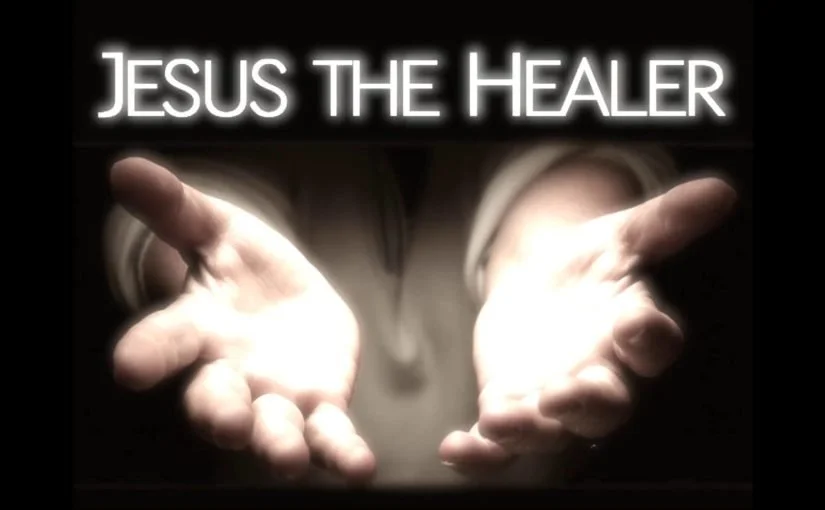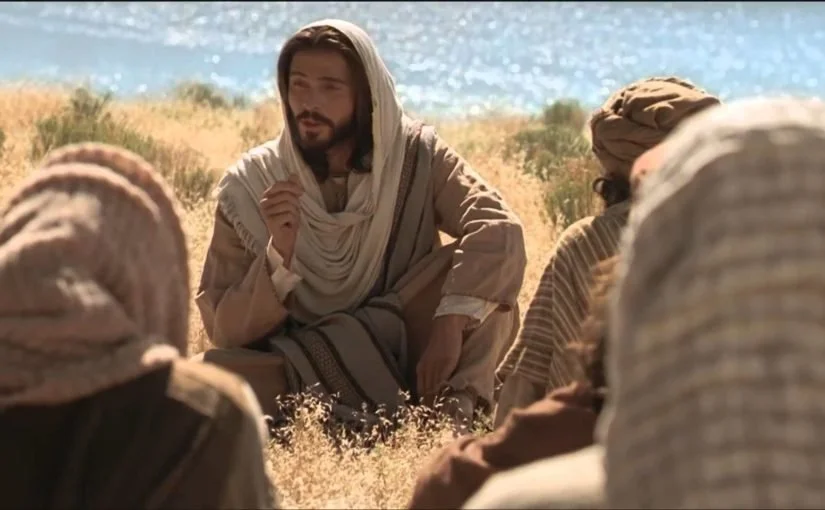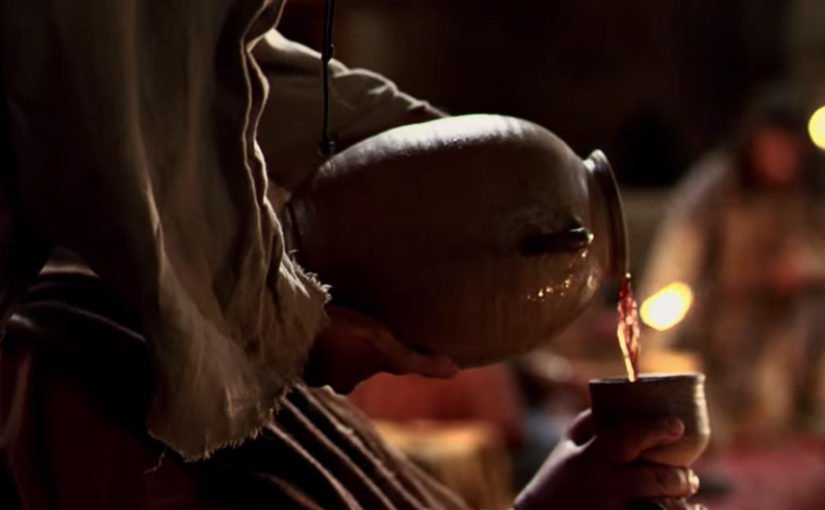What Jesus DID: “Seven Works of the Master” (Part II) – John 4:46-54
Most of what happens in life is well beyond my comprehension. I don’t really understand how my microwave works. I get the basic concept, but I cannot (for the life of me) figure out how someone worked out all the mechanics.
Honestly, I am still trying to figure out how someone put together the string of information that invented the first pasta! Think about it! How did someone actually figure out that if you take the grain head from the wheat, let it dry thoroughly, take off the husk of the grain, grind the head into flour, add water, knead it, cut it into small strips, lay it out in the sun to dry, take the dried material and boil it for a brief time – you will have “al dente” pasta?
These things amaze me. Think about it. Men and women can blast other men and women to the moon or up to a space station. We can engineer the combinations of DNA strands in a “Petrie dish” to change physical characteristics of our offspring. We can store 100,000 pages of text on a silicon chip the size of a finger tip. We can dive deeply enough to explore the depths of the ocean with an unmanned submarine and fly a mission thousands of miles away from an unmanned drone to shoot a missile at a small group of men hiding out near a cave. Much of what we can do most of us cannot truly understand. So I need to ask you…
What does “faith” really mean in a time like ours?
Does it mean that someone knows how it works, and I should just accept it and keep learning? Ever since I was young in my faith, I have heard people say that I just needed to “accept some things by faith” as if that was supposed to satisfy the curiosity of all, and be the end point of the discussion
when something could not be readily explained. Yet, I kept asking, “Is that really what God intended me to do?” Is faith a last refuge, a “cop out” for things that Christians don’t know or haven’t searched out? Am I supposed to turn off my mind and simply trust whatever I am told about God that cannot seem to be explained? I know now that is not at all the case.
In the Bible, faith is not about whether you can explain the “how” of something or not. Faith, in essence, is the absolute trust that the world is not how it appears, but how God says it operates in His Word. It is a “Biblical world view.” When I accept Jesus by faith, I accept that God’s record of Who Jesus is and what He did was both correct and accepted by the Creator. When I walk by faith, I walk in the light of His Word and see the world as He proclaims it to be. Yet, my belief isn’t without evidence at all.
I believe in a Creator because I see the product of organization all around me, and I know that billions of years won’t create structure and organization exacting enough to make a strand of DNA morph into an aardvark while another morphs into a zebra. The heavens proclaim organization, color, beauty and design. Design requires a designer in every area I can grasp.
At the same time, we are called on to “believe” and “have faith” in our God, so I ask: “What does it look like to truly believe?”
That is our subject for this lesson, “What Jesus Did.” In John 4, we are going to encounter a man who modeled belief because he trusted the word of Jesus so fully that he rested when others would have run. In the verses of John 4:46-54, the writer revealed a second miracle performed by Jesus. Part of that group of events John collected in his account. Remember, John’s gospel included seven miracles, each recalled so that a reader might know more of Jesus, believe in His claims, and have life through that belief, according to John 20:30-31. John offers us a lesson that is unmistakable, if understood in context. He taught:
Key Principle: I demonstrate true faith when I change my life to conform to what God said.
The story recorded in John’s Gospel (4:46-54) is a profound and yet simple story – but it requires you know something of the geography of where Jesus lived and traveled. The key to the entire story is contained in the details of time and distance between two ancient villages, set in the hills of lower Galilee. I have walked the path between these villages, and though neither is a living town today, the ruins can be identified and still mark the places. The ancient roadway is still a trail along the edge of the hillside, since roads tend to remain in place for millennia. People purchase and cultivate both sides of a roadway, but no one owns the road, so they tend to stay in the same place.
In the case of this path, the steep incline rose from Capernaum (a village that was in the Jordan Rift Valley north of the Sea of Galilee) up through the Arbel Pass to ancient “Khirbet Cana.” To walk up the path is no less arduous than can be traversed in an eight hour journey (plus or minus a few minutes). That same path in reverse direction is a mere five and one quarter to five and one half hours journey (because it drops downhill).
Jesus was around the Sea at Capernaum, and people knew Him there, but it wasn’t YET a big part of His ministry. In the early part of the ministry, He was in Nazareth, went to John’s preaching by the Jordan, made His way to Jerusalem for a time, and then began to announce His ministry throughout the towns of the Galilee region.
Let’s drop in as an observer to the happenings in Cana some two thousand years ago…
John 4:46 Therefore He came again to Cana of Galilee where He had made the water wine. And there was a royal official whose son was sick at Capernaum. 47 When he heard that Jesus had come out of Judea into Galilee, he went to Him and was imploring Him to come down and heal his son; for he was at the point of death. 48 So Jesus said to him, “Unless you people see signs and wonders, you simply will not believe.” 49 The royal official said to Him, “Sir, come down before my child dies.” 50 Jesus said to him, “Go; your son lives.” The man believed the word that Jesus spoke to him and started off. 51 As he was now going down, his slaves met him, saying that his son was living. 52 So he inquired of them the hour when he began to get better. Then they said to him, “Yesterday at the seventh hour the fever left him.” 53 So the father knew that it was at that hour in which Jesus said to him, “Your son lives”; and he himself believed and his whole household. 54 This is again a second sign that Jesus performed when He had come out of Judea into Galilee.
Look closely at the text. There are two things you should note before you take a “deep dive” into the scene:
First, the places are mentioned. Cana was the location of Jesus, but Capernaum was the location of the sick boy.
Second, the time of the healing was given. Did you notice the “seventh hour” in verse 52 was the hour that Jesus healed the boy according to verse 53?
The text can be broken into three simple parts:
1. A desperate man came to Jesus (4:46-49).
2. A believing man trusted Jesus (4:50-52).
3. A household demonstrated faith and belief (4:53-54).
First, we need to examine the account of the man that came to Jesus (4:46-49).
It is clear in the account that a man who lived in Capernaum heard the reputation of Jesus based on His previous works or in some way knew Jesus casually, but now found himself in desperation because of his sick son (4:46-47). Though Capernaum means “village of comfort,” in this story the man was nothing close to comfortable. Let’s summarize the things we know about him based on the account:
• He knew of Jesus and what others claimed He could do (John 4:46a).
• He was faced with a heart rending problem beyond his ability (John 4:46b)
Note that his “problem” led him to seek Jesus, and meeting Jesus met more needs than he anticipated.
That is often how it works. Ask people who walk with Jesus how they met Him. They may tell you about a background problem that led them on the path to the Lord. Problems can break down our sense of self-sufficiency. They can unmask our true vulnerability.
Desperation opens our hearts to make us willing to take our need to Jesus and abandon self-reliance. Giving up my falsely constructed sense of control is at the heart of accepting Jesus.
Before we skip past the detail, look at the identity of the man who came seeking assistance. He is called “a royal official” as the English translation for the Greek word basilikos. Basileus is the term for a king. This related word is the term for something or someone from a royal line. The weight of the word is not in reference to their job, but rather their “standing” in the community. This guy was a “somebody” in the celebrity category.
Though deemed important in rank, the man didn’t send one of “his people” to Jesus. Rather, he climbed the steep path some twenty miles from Capernaum to Cana. With the pictures of his son playing like a video loop in his mind, the man cared little about any humiliation of asking for help, nor was he fixed on any social difference in status between Jesus and himself. His son was facing death. He couldn’t stop it any other way. There was nothing else more important on his mind.
When you read the nobleman had to lower himself to seek help from a humble Jewish villager and itinerant preacher, don’t forget this truth: There is no home into which sickness and sorrow cannot enter – and when it does it reduces our man-made social divisions. Stand in the hospital and watch. Rich and powerful break down just like poor and needy when sickness strikes and death nears.
Crisis led him to Jesus. Crisis reduces arrogance and allows a man of standing, wealth and power to humbly kneel. For some of us, that crisis was the best thing that ever happened to us.
Notice how the man reached out for Jesus and begged Him to have mercy and deliver him from the clutches of the terrible need (John 4:47).
If you read the Scriptures thoroughly, you will note the man’s humility is part of what led Jesus to help. God resists the proud, but gives undeserved help to the humble. Jesus responded in two ways:
First, Jesus told those around Him that Galileans only seemed to believe what they could SEE (John 4:48).
We need to consider these words carefully. Jesus’ reaction (on first reading) does not seem loving at all – it sounds almost heartless and cold. It sounded like He said (apparently to the crowd around Him): “Unless you people see miraculous signs and wonders you don’t believe.” Why take a seemingly desperate man and “hold out on him” like that? The answer is not as complicated as it may appear. Remember, this is another story to show that Jesus knows the heart of man (as John noted back in John 2:24-25).
This man was far from home. He couldn’t see his child. Jesus could claim to heal him, but the man wouldn’t be able to immediately check. Jesus was stating there was an opportunity there, not rejecting the man’s request. He was going to heal the boy, but the key to the story is what happened NEXT.
At the same time, Jesus DOES understand how manipulative people can be. We will move heaven and earth to achieve what we want. We ask desperately for the healing of our child, but when it’s done no commitment to Him or His message remains. We will use God to get what we want rather than allow the struggle to lead us to submission to God.
Consider the forces at work when people say: “If God is a healer, then why are there sick children in the world? If God is peaceful, then why do wars happen? If God loves, then why do bad things happen to good people?”
Behind these questions there is the desire to see God prove himself by taking these evil things away so that we will all believe in him and live happily ever after.
The problem is when God removes these problems it usually doesn’t end with the whole room following Him. The problem is based on a false premise: that people would believe and kneel if God did something about our troubles.
Think about it: There are plenty in our world who have enough to eat, aren’t struggling with the effects of war, plenty who have food on the table and a roof over their heads. Yet plenty of those people do not have a relationship with God. There have been many good times in our lives that did not yield surrendered lives.
Our relationship with God must not be simply based on his ability to heal us or perform other miracles for us. Our faith must leave this world’s way of thinking and take on a Biblical world view, solely based on surrender to the Word of Jesus.
Why didn’t Jesus make it easy for the man?
In our modern American lifestyle, we often act as though life should be easy. Ease, in fact is not always what is best for us. A faith that doesn’t challenge us is a faith that is not worth having. True faith requires of us a change. Real faith comes from God, as Ephesians tells us – and not from within ourselves. Yet, it results in surrender to Jesus’ role in our lives, not simply the solution to the immediate crisis.
A new king sits upon the throne only after a pitted struggle to remove the old king!
Second, Jesus told the man that he could trust in His Word alone.
He said: “Go, your son lives,” (John 4:50a). He didn’t even say He healed the boy! He merely said, “Go home. He’s ok!”
Yet, the man changed when he encountered Jesus:
At first, he was clearly panicked by the delay and distance (things he could observe with his eyes and heart) and tried to get Jesus to understand the immediacy of the need when he said, “Sir, come down before my child dies.” (John 4:49). After Jesus spoke, the man clearly believed the word so thoroughly, that he exchanged panic for trust (John 4:50b). How do I know? Let’s take a closer look…
Next we need to examine the man and his apparent “trust in Jesus” (4:50-52).
Jesus spoke to the man at one o’clock (the seventh hour of the daylight according to John 4:52) and yet did not return home the same day. The text is clear the man encountered his slaves “the next day.” How could this be? He came with panic in his heart and yet stayed from one o’clock in the afternoon until the next day to journey down the five and one half hour path to his home? The key to the change is the word “BELIEVED” in verse 50.
The man believed. The man trusted the word of Jesus. He exchanged SEEING for what Jesus TOLD HIM – “Your son is alive and well.” He rested in that promise overnight. He ceased striving to find a way to care for the need because he believed the need was already met.
It was in his going, not in his arriving that he received the assurance that his faith had been rewarded.
A single act of faith led to a life of faith. In Genesis 12, God called Abraham to follow Him from his home to new land that he had never been. His decision is described in Hebrews 12:8, “he went out, not knowing.”
Here is the key: I truly believe God’s Word only when I accept the Word as it is stated and change my life to conform to what it says I should do and become. I change my behavior. I rest in the words and see life through them. I don’t keep seeing as others see!
That helps us understand the “full grasp of belief.” The man’s household believed by the end of the account (4:53-54). What does that mean?
Notice two important changes that occurred in the heart of the man after his initial trust was confirmed by the facts on the ground:
• The man trusted in Jesus’ words, but that trust was confirmed in his life as he walked in those words (4:53). He didn’t require proof, but he got it as he believed.
• The seed of that man’s belief became a testimony that when shared sprung up in a tree that sheltered the whole family, and they all believed together (4:53b).
A profound testimony can produce great faith in those who observe your changes. It is hard to refute a life surrendered and changed by Jesus.
C.S. Lewis wrote: “I have to believe that Jesus was (and is) God. And it seems plain as a matter of history that He taught His followers that the new life was communicated in this way. In other words, I believe it on His authority. Ninety-nine percent of the things you believe are believed on authority… The ordinary person believes in the solar system, atoms, and the circulation of the blood on authority–because the scientists say so. Every historical statement is believed on authority. None of us has seen the Norman Conquest or the defeat of the Spanish Armada. But we believe them simply because people who did see them have left writings that tell us about them.” (C.S. Lewis, A Grief Observed)
As we examine the story then, what is faith? It is seeing the world as God says it is, not as my eyes say it is. It is accepting HIS WORD as the authority on what truly happened and what will happen.
It begins when I admit my need. The truth is that my senses are limited and can produce a faulty conclusion.
The other day I was driving and I wanted to make a left on Thunderbird Road coming from The Home Depot. My wife was in the car and it was raining. I looked first to my left – no one was coming. I looked to my right – no one was coming… or so I thought. I began to pull out and my wife said, “Stop, stop! There’s a car!” Blocked by a blind spot on the car at that angle and by my wife’s lovely head, I totally missed the view of the car. I was responding to what I saw, but not what was truly there. I was boldly proceeding as if I knew what was there, but I did not truly see things as they were.
That is how many of the people we know live today. They are proceeding confidently and ignoring blind spots.
Faith is the ability to see the truth. Since Jesus is the truth, and speaks the truth – it is the ability to see “through His eyes.”
Akin to faith is the Biblical word “BELIEVE” (επιστευσεν from pisteuo: to have faith (in, upon, or with respect to, a person or thing), to entrust. Belief is only truly seen in change (as James notes). It is “the convincing of the mind and heart that leads to a willful surrender to the conditions of that truth accepted.” When Abraham believed that God would send him a son — he built a nursery. The belief was not complete until the actions accompanied the faith confirmed the change in authority over the life of the man of faith.
Sometimes, it even takes time to find out if the surrender is real:
A young woman had become critically ill and her prognosis was grim; she would likely die within the year. Her family had a nominal “Easter and Christmas” commitment to the church, so the discussions in the hospital between this young pastor and the family always ploughed new ground. The woman challenged him – if Jesus healed in the Bible, he should be able to heal me today. If not, what use was He? So she begged and bargained. “If only” God would show mercy, the family urged, they would completely recommit themselves and come to church every Sunday. This earnest young pastor prayed with all his heart. He refused to join the ranks of those who said, “If it is Thy will.” It was God’s will that she be healed, he concluded. Then to his amazement, God healed her—completely. And with the physicians shaking their heads, she was sent home from the hospital. Next Sunday, the entire family was there in the front pew, dressed and sparkling. The young woman gave her testimony, praising God for his goodness. The following Sunday, the family was there again. In four weeks, it was only the woman and her husband. And after that, attendance was sporadic until they dropped into their previous pattern. Before long, the woman rationalized the entire incident. She had experienced the most dramatic sign God could give her: healing, bathed in prayer and surrounded by the church. But after only two months, its power dimmed to nothing. (Sermon Central Illustrations)
Her surrender was not real, though her amazement was. She was amazed at first that God could and would act on her behalf. If our encounter is with amazement alone, it will fade.
God isn’t looking to amaze you if it doesn’t change you.
If our encounter led us to true surrender – we will ever be changed and marked by our walk with Jesus. Jesus is looking for surrender to Him, not an applause line from an amazed admirer.
Jean Francois Gravelet, also known as “The Great Blondin,” was the first tightrope walker to appear at Niagara Falls. On June 30, 1859 the rope was fully in position to cross the falls. It was five o’clock in the afternoon and Blondin started the trip that was to make history. As he began his ascent toward the Canadian shore, he paused, steadied the balancing pole and suddenly executed a back somersault. Never content merely to repeat his last performance, Blondin crossed his rope on a bicycle, walked blindfolded, pushed a wheelbarrow, cooked an omelet in the centre and made the trip with his hands and feet manacled. And then, he announced that on August 19 he would cross the gorge carrying his manager, Harry Colcord, on his back. (Source: http://www. niagarainfo.com/historic.htm)
Harry Colcord demonstrated what we are referring to as “Biblical belief.” He didn’t just have the faith to know that Blondin could make the trip; he acted on that faith in allowing it to change HIS future.
In that same way, Jesus invites us to crawl upon His back, and to surrender control to Him for our lives and future. He will walk us through Heaven’s gates. Nothing less than crawling on is what He seeks.




